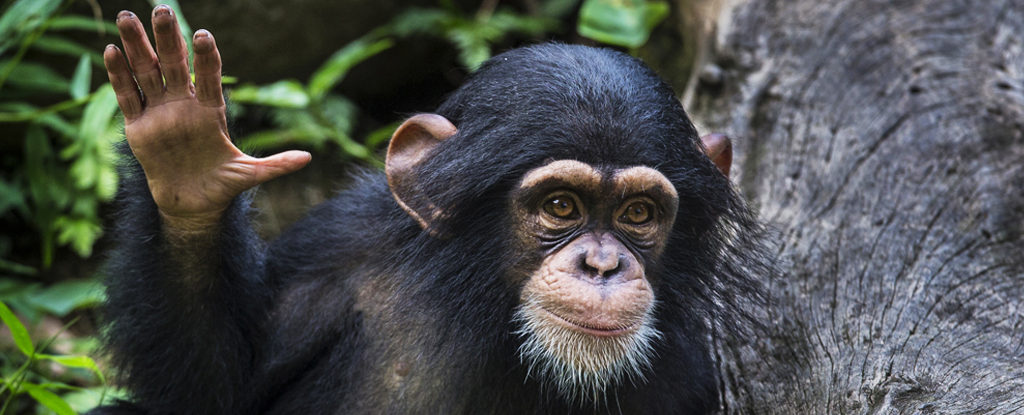The rapid back and forth dance of face-to-face conversations is not unique to us humans. While chimps typically favor gestures over sounds, their exchange of ideas is just as fast as ours and reflects similar cultural patterns, a new study reveals.
Observing the timing of gestures within communities of wild East African chimpanzees, an international team of researchers found responses followed pauses of up to a second. Some reactions were virtually instantaneous, where the chimps interrupted each other just like we do in a heated discussion.
“We found that the timing of chimpanzee gesture and human conversational turn-taking is similar and very fast, which suggests that similar evolutionary mechanisms are driving these social, communicative interactions,” explains lead author Gal Badihi, an ethologist from the University of St Andrews in the UK.
This means the way we communicate may have originated somewhere early in our evolutionary history, before humans and chimps, our closest living relatives, parted ways millions of years ago.
frameborder=”0″ allow=”accelerometer; autoplay; clipboard-write; encrypted-media; gyroscope; picture-in-picture; web-share” referrerpolicy=”strict-origin-when-cross-origin” allowfullscreen>
Examining more than 8,500 instances of gestures from 252 individual chimps, Badihi and colleagues saw not only similar patterns to human communication within the chimps’ activities, but that they also reflected differences in communication between their cultures too.
“We did see a little variation among different chimp communities, which again matches what we see in people where there are slight cultural variations in conversation pace: some cultures have slower or faster talkers,” says Badihi.
Uganda’s Kanyawara chimpanzees seem to be fast ‘talkers’ compared to Sonso chimpanzees who live in the nearby Budongo Forest, the researchers observed.
“In humans, it is the Danish who are ‘slower’ responders, and in Eastern chimpanzees that’s the Sonso community in Uganda,” says University of St Andrews primatologist Catherine Hobaiter.
Previous research has identified other similarities in the ways we communicate. Just as our words make up sentences to provide meaning, for example, chimps also combine short frequently used gestures in combination to form longer sequences of meaning.
The researchers are curious to learn more about what it is these chimps are saying to each other, and suspect many of the gestures may be requests. Researchers have already identified 58 different versions of the ‘let’s play’ gestures chimpanzees use in the wild.
“Communication helps chimpanzees avoid conflict and co-ordinate with each other. Their gestures allow them to communicate over short distances to achieve social goals in the moment,” Badihi told the PA News Agency.
“So, one chimpanzee could gesture to another that they want food, and the other might give them food or, if they feel less generous, respond by gesturing for them to go away.”
In one observation a chimp named Monica extended her hand after a physical conflict with a fellow chimp named Ursus. Ursus provided a tap in return, as reassurance, showing how the gestures can be used to reestablish harmony.
frameborder=”0″ allow=”accelerometer; autoplay; clipboard-write; encrypted-media; gyroscope; picture-in-picture; web-share” referrerpolicy=”strict-origin-when-cross-origin” allowfullscreen>
So while there are still many obvious differences between chimp and human languages, similar rules appear to underpin both systems.
“We still don’t know when these conversational structures evolved, or why,” says Hobaiter. “To get at that question we need to explore communication in more distantly related species – so that we can work out if these are an ape-characteristic, or ones that we share with other highly social species, such as elephants or ravens.”
This research was published in Current Biology.





















Discussion about this post